Drivers of individual foraging behaviour specialisation in a model seabird, the Falkland Islands shag
King shag, imperial cormorant, Falklands shag…it can be difficult to talk about a species when it goes by so many names. But this is my challenge for the next three and a half years, as I’ll be diving deep into the unknown aspects of their foraging behaviour to find out what they’re eating, where they go to feed, and why this differs between birds. This novel data will then be used to test ecological theory and inform marine management as part of my PhD.
In late 2022 I swapped the short and soggy days of a Scottish autumn for the long and breezy afternoons of the Falklands. This southern corner of the world is one I’ve wanted to visit for a number of years and not only was I coming to see the wildlife (which is a privilege in itself), I was going to be researching it. A real dream come true. And it didn’t disappoint.
The journey from 56 degrees north to 51 degrees south is long. After an eight-hour train ride, two-hour drive, 18-hour multi-stop flight, broken up with hours of waiting in between, I was finally in Stanley. But not for long. After a short delay due to the weather – as can often be expected with remote fieldwork – our small team hopped on a boat and travelled northwest from Carcass Island to Grand Jason, the first of my field sites. A slight swell in the sea and a fair breeze brought plenty of albatross, storm petrels, prions and shearwaters along for the ride. A wonderful introduction to the local birdlife!
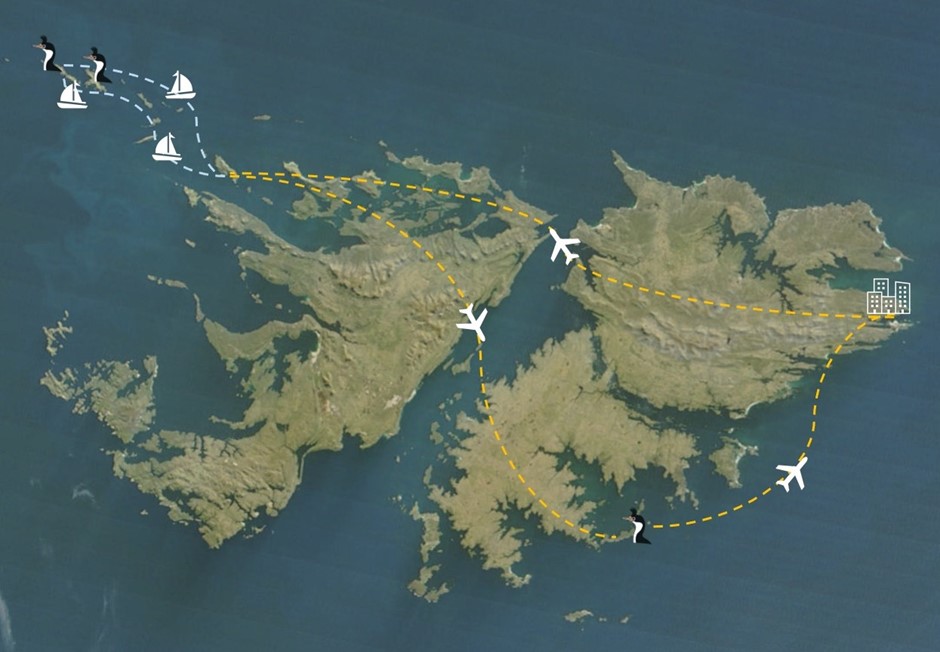
Grand Jason became home for just under three weeks. The southeast bay provided a sheltered spot to tuck our tents in the tussac, away from the worst of the winds and among the magellanic penguins – and unfortunately, their fleas too. As soon as camp was set up, it was time to find the birds we were here for. After ten minutes of walking, the sky above the tussac was filled with soaring albatross, indicating that we were close. Grand is host to the third largest black-browed albatross colony in the world, and set against turquoise seas and open skies, it’s certainly a memorable sight. Mingled among them were southern rockhoppers and thankfully, some Falklands shags. The size and even existence of the colony was unknown to us before we arrived, so one of my tasks was to walk round the island, inspecting every cluster of birds lining the islands’ slopes and count any nests.
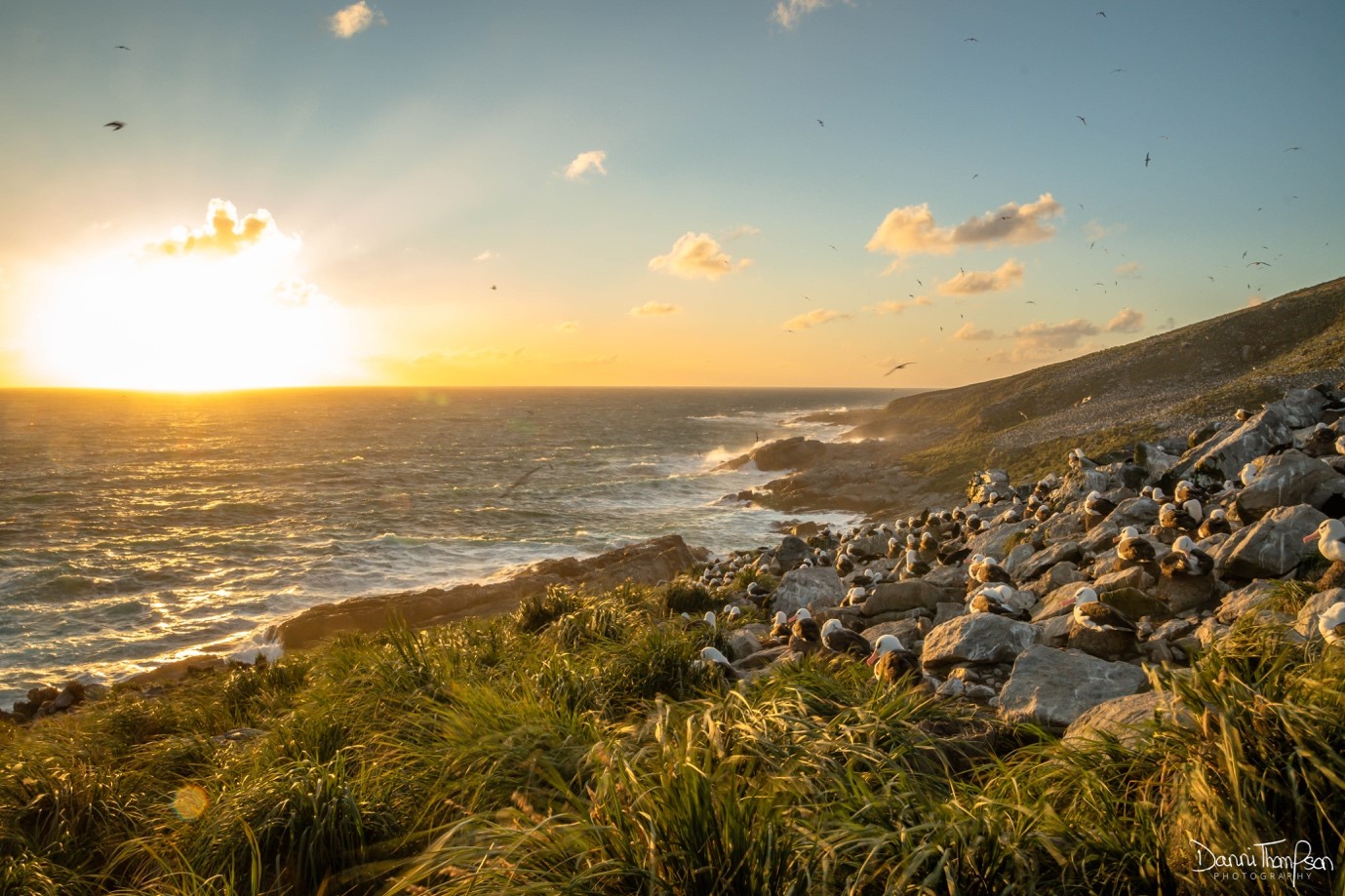
We spent a little time getting to know the colony and familiarising ourselves with the species – I’ve worked with seabirds before, but Falklands shags are new to me – and then it was time to start collecting data. To gather information on where the shags are foraging, we attached small GPS tags to the backs of breeding adults, and some were also fitted with time-depth-recorders (TDR) so we can monitor the depths and patterns of their dives. Small tags mean small batteries however, so after a week or so it was time to recapture the birds and retrieve our tags (and the all-important data!). Before departing for the next site, we needed to collect diet samples. Much like owls, shags regurgitate pellets of undigested material. From these pellets we can look at the bones and other hard parts, such as octopus beaks, to identify what the birds have been eating. The bonus is that pellets are easy to collect from around the colony without causing the birds too much bother.
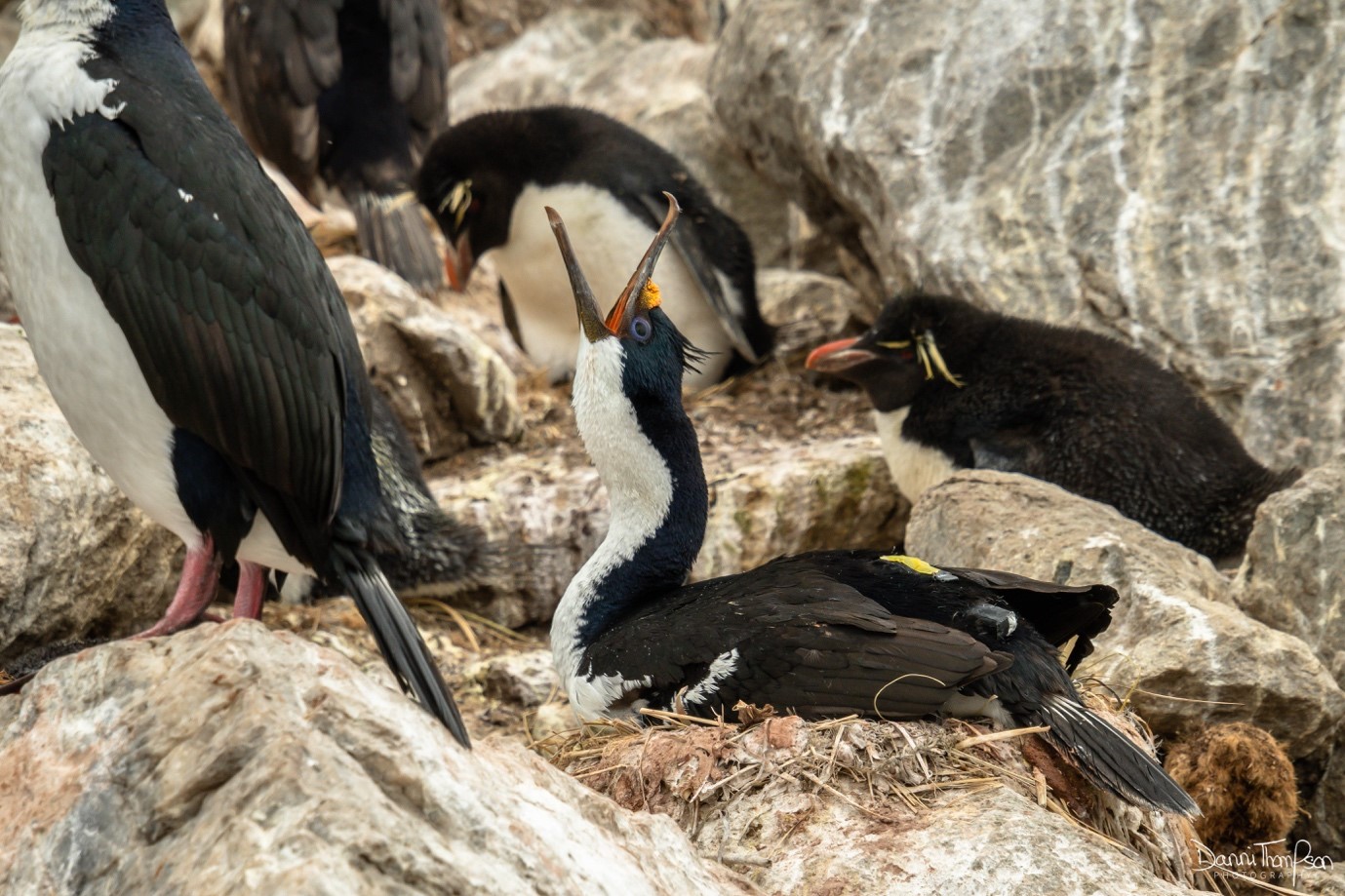
Once I’d mastered all the skills I’d need for data collection, it was on to Steeple Jason where the tagging and pellet collecting was repeated either side of Christmas. The colony here was smaller than that on Grand, but in a sense, the shags were easier to work with as they nested in a single-species colony. The main challenges were accessing the colony, battling through the dense maze of 2m-tall tussac and shepherding a hundred or so snoozing fur seals out of the way. And the weather. I was grateful to now be in the research station instead of a tent, as several days of near gales shook the house and brought our time on the island to an early end. Thankfully we found some short weather windows in which to retrieve all of the tags and to hop on a boat back to Carcass.
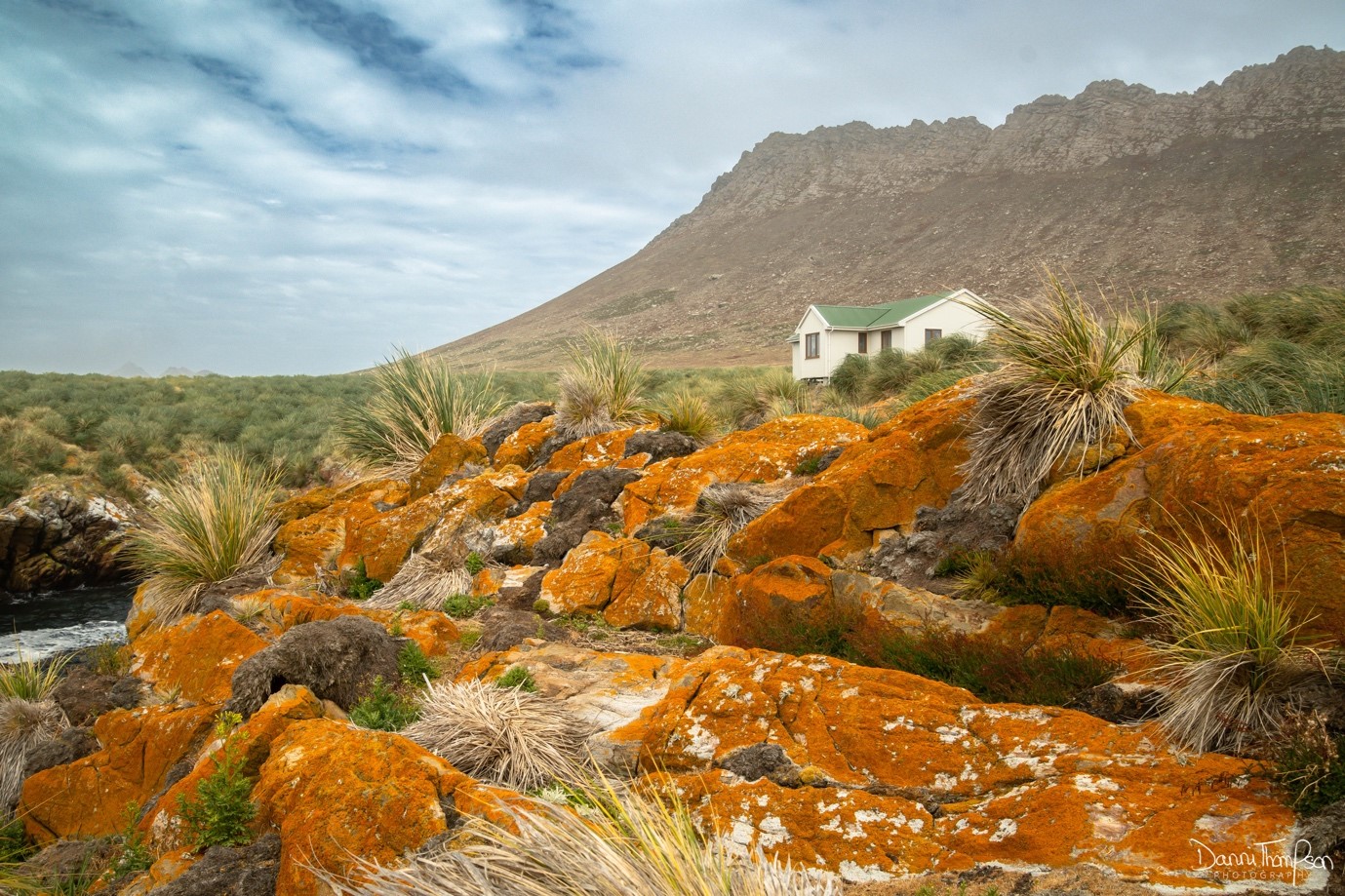
Bleaker was the final site on my list, but as I moved east, the winds followed me. As well as gathering data, this field season was also an excellent opportunity to learn lessons for my next visit. Shags are known to be somewhat variable in the timing of their breeding, but it appears that colonies in the east may also start laying eggs much earlier than those in the west. The larger the chicks are, the less time adults spend at the nest, returning only to feed their chicks before heading back out to sea for the next meal. This makes it much harder to capture adults and therefore the risk of being unable to retrieve tags becomes higher. Unfortunately, the chicks at Bleaker were very well advanced by the time I arrived. So much so that within a week some were starting to look less like fluffy snakes and more like mini adults, with white bellies and primary feathers coming through. But all was not lost. Pellets were plentiful and it was a great opportunity to begin planning for next season. As the Falkland’s largest – and unusually inland – colony, Bleaker will make for an interesting comparison with the small, offshore colonies of the Jason Islands.
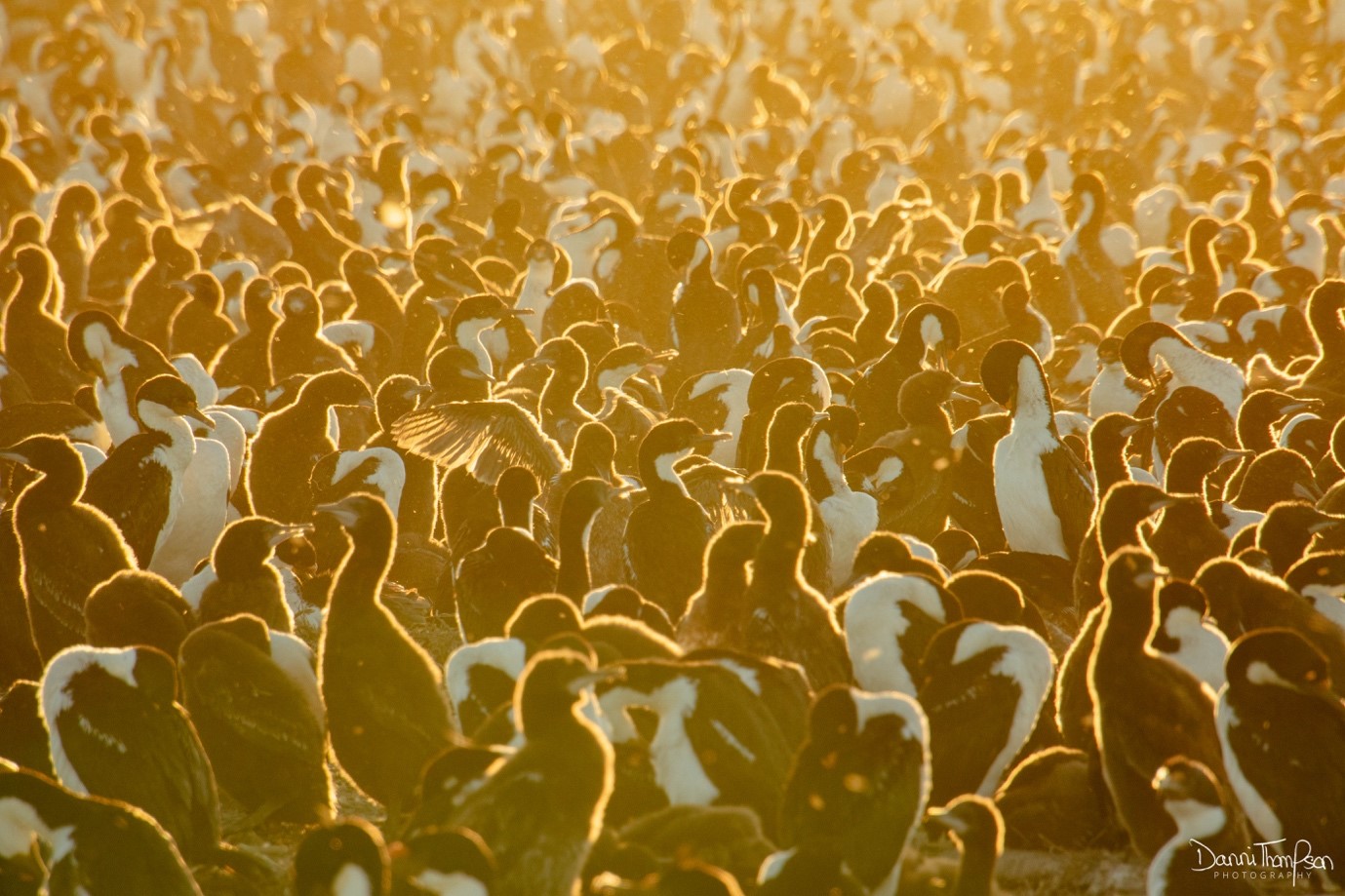
I’m now back in the snow-dusted Central Belt of Scotland but the excitement continues as I’ll spend the rest of the year preparing and analysing the data collected so far, and planning for my next visit in December.
You can read more about my research and the adventures behind the science on my blog and on Twitter @scottishseabird
This research is in collaboration with the University of Aberdeen, NERC, and SAERI. A huge thank you to Polar Seafish and Rab Equipment for fieldwork sponsorship.





















































